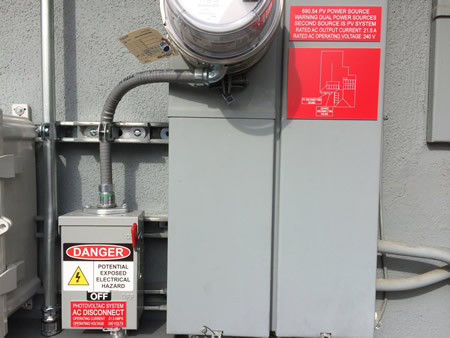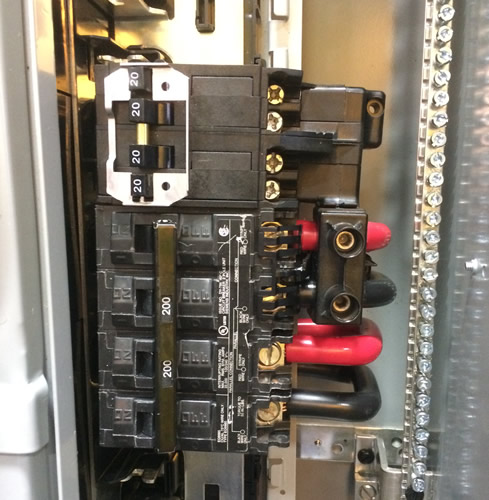Welcome to the
Run on Sun Monthly Newsletter

In this Issue: |
September, 2017
Volume: 8 Issue: 9
Pasadena Solar Rebate Ends December 31st!
The Pasadena Solar Initiative - clearly the best run solar rebate program in SoCal - is ending December 31, 2017! Here's our take... For PWP customers, this means that you need to get a complete rebate application on file before the end-of-year deadline. You then have six months from the date of the reservation to complete the project. The rebate, while it lasts, is $0.30/Watt for both residential and commercial customers, and twice that, $0.60/Watt, for non-profits. If you have been sitting on the sidelines wondering when would be the best time to go solar in PWP territory, well, here's your answer: Now! The PSI has been around in its present form almost as long as Run on Sun has been in business, and we would be remiss if we didn't take a moment to give credit for this wonderful program. Over the past nine years it has been a model of how to run a rebate program: open, transparent, easy to participate with predictable rebate amounts, and no sudden interruptions in availability. (Cf. alleged rebate programs in Glendale and Burbank, or the horrible SGIP program.) We are proud to have worked with all the folks behind the PSI at Pasadena Water & Power and they have done a terrific job! We are greatly appreciative of their hard work, particularly Mauricio Mejia, Irma Cid-Lujan, Alex Gonzalez, and John Hoffner. Thanks for a successful nine years - well done! |
“The best run solar rebate program in SoCal ends 12/31 - PWP customers, call us now!…”
Help Us Spread the News!


The Biggest News at SPI 2017 - B3 BypassWe just got back from Solar Power International 2017 and it featured all the usual players with lots of cool stuff on the (gigantic) floor of the Convention Center at Mandalay Bay. But the biggest deal of the show, from our massively solar geek perspective, came from a tiny booth that no doubt many folks missed altogether. But for many of the potential clients that we see, this was a really big deal! Here's our take... The Sad State of PlayHere in SoCal, we find a great many center-fed service panels - that is, a service panel where the main breaker is located in the middle of the bus. Now in a truly rational world, that wouldn't matter, but around here, the prevailing view is that you cannot use the "120% Rule" on a center-fed panel. (I know this is totally in the weeds, but the 120% Rule says that the sum of all breakers supplying a service panel cannot exceed 120% of the bus rating, and that the solar breaker has to be at the opposite end of the bus from the main breaker.) So, on a 200 A bus, with a 200 A main, the PV breaker is limited to 40 A. All fine and good, but it is that "opposite end of the bus" that causes some AHJs misery - like LA County - who insists that with a center-fed panel, there is no "opposite end of the bus"! (Ignore for the moment that if I have a center fed panel with 10 slots above and below the main, I'm out of luck. But I could have a main panel with a total of 10 slots below my 200 A main, and no one would have a problem with my putting my PV breaker in the bottom slot!) So, we are presently stuck with an ignorant interpretation of the Code and it has meant that some folks needlessly were forced to upgrade a perfectly good center-fed service panel just to go solar. Oh, and it costs just under $500 to have SCE install the ring (and their service tech has to suit up to reduce the risk that he gets lit up like a Christmas tree while doing the install). Geez, all this because of a bad code interpretation! To the Rescue - B3 Bypass!Fortunately, there is now an alternative to this madness! A California-based outfit that goes by the not-so-catchy name of QFE002, has come up with a revolutionary product - that is now UL listed! (They have been coming to SPI for years, but they just got UL!)
They are taking order requests on their website, although we don't yet have pricing or timing for potential deliveries. (My guess is that they are just now trying to move into production mode, now that UL is behind them.) We passed along their info to both BayWa and CED Greentech - hopefully they will get a distribution deal going so that they can make this available far and wide! We are definitely fans! |
Pasadena's Power Mix - Room for ImprovementRun on Sun is proud to call Pasadena home. We absolutely love this place. But it isn't perfect, as evinced by the latest report on where Pasadena gets its power - that's right, the 2016 Power Supply Content Label is now out, and it is a mixed bag to say the least! Here's our take... Every year, California utilities are required to post a table that reflects the sources of the power that they provide, the "Power Supply Content Label." We wrote about PWP's energy mix when the previous label was published, and at the time we noted that coal constituted 34% of the energy supplied, with natural gas another 6% - a full 40% coming from fossil fuels. Surely a year later the news would be better, right? Not so much - here it is, read it and weep: 2016 Power Supply Content Label
Both coal and natural gas went up! While the overall statewide mix is just 4% coal, PWP gets 10 times that much, a whopping 40%! Combine that with natural gas, and 52% of our power comes from fossil fuels. Moreover, half of the "renewables" comes from burning biomass and waste, thereby also contributing to greenhouse gas emissions! (One bright spot - utility scale solar now accounts for 5% of all energy, up from zero the year before.) Lest you think all of the small munis are as bad, not so. Glendale Water and Power, in particular, is kicking PWP's backside, with only 5% from coal, and just 29% from natural gas. GWP also gets 26% of its power from wind! (Here's a link to their power label.) PWP is making some strides, however. Last year they replaced a 51-year-old steam plant with a combined cycle turbine unit that can produce power within minutes, compared to the 72-hour start time for the old system. But at 52% fossil fuels, PWP still has a long way to go! |



